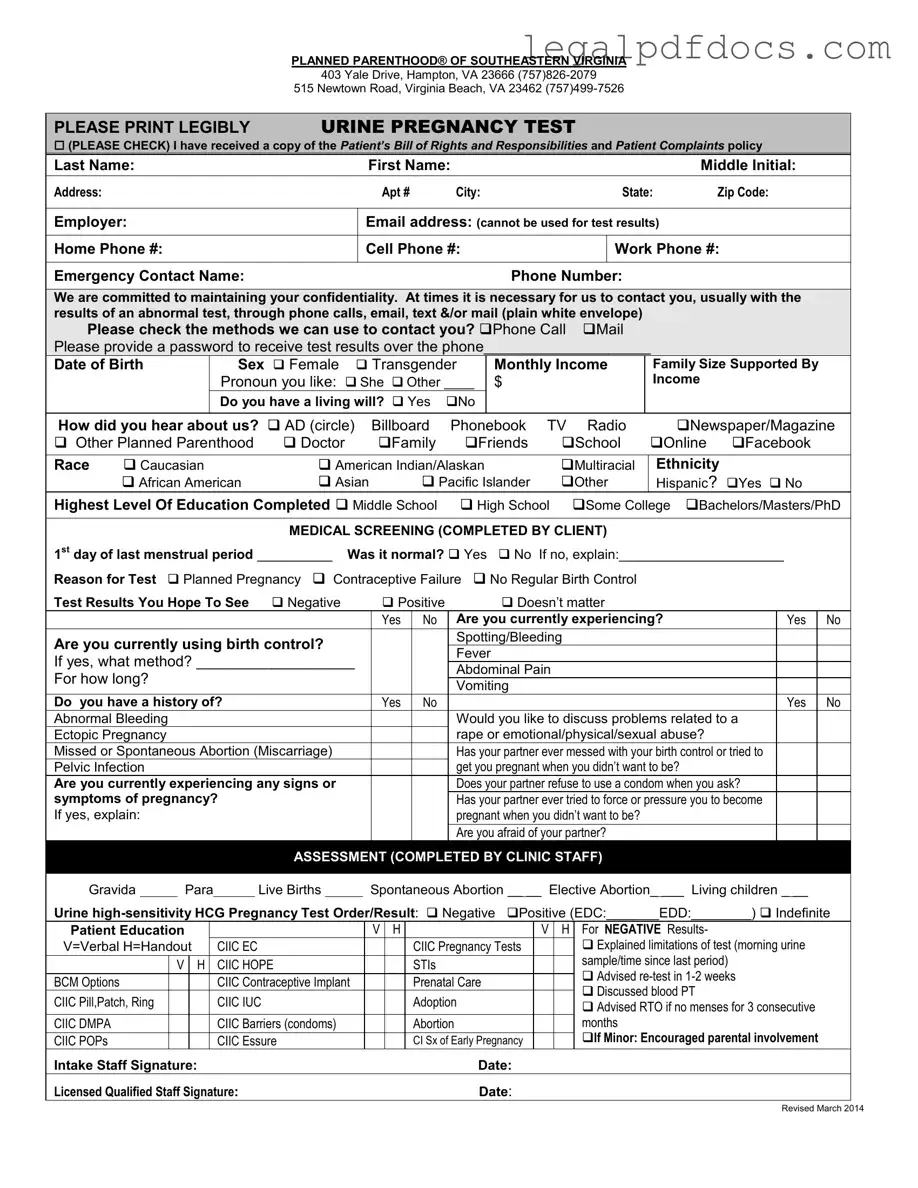Fill Out a Valid Planned Parenthood Proof Template
The Planned Parenthood Proof form is a document used to gather essential information from patients seeking medical services, particularly related to pregnancy testing and reproductive health. This form ensures that patients understand their rights and responsibilities while also maintaining their confidentiality throughout the process. For those ready to take the next step, please fill out the form by clicking the button below.
Open Planned Parenthood Proof Editor Here
